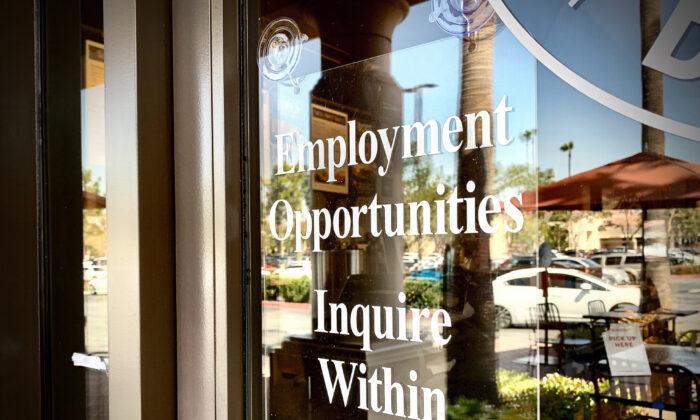High-frequency workforce activity data from payroll tracking firm Ultimate Kronos Group (UKG) shows that shift work in the United States declined for the second month in a row in September, casting a shadow over the closely watched government report due on Oct. 8 that will reveal how many jobs the U.S. economy created last month.
“By most predictions, September was supposed to bring a return of strong economic and workplace activity, as schools reopened fully and unemployment benefits expired. This simply wasn’t the case,” Dave Gilbertson, vice president of UKG, said in a statement.
Gilbertson said it’s likely that concerns about health amid the spread of the Delta variant of COVID-19 were a factor holding people back from rejoining the workforce.
“As cases decline, we are feeling optimistic about future growth overall, but are closely watching the impact of supply chain disruptions in manufacturing and lackluster activity in the retail sector. With the ongoing labor shortage still in full force, retailers will need to offer more than just higher pay to entice people to staff stores as the holiday shopping season rapidly approaches,” he said.

UKG’s August workforce activity report—which showed a 2.4 percent contraction in shift work and was released before the Labor Department’s August non-farm payrolls data—suggested the government’s official jobs creation data would come in soft.
The much-anticipated employment report on Oct. 8 is expected to deliver better jobs creation or recovery figures for September compared to the disappointing August reading, though UKG’s soft September workforce activity figures temper optimism.
“The consensus is for a gain of nearly 500,000 jobs in the September snapshot, better than the 235,000 August jobs rise, but short of this year’s monthly average of 586,000,” Bankrate senior economic analyst Mark Hamrick said in an emailed statement to The Epoch Times.
While Hamrick noted that there are encouraging signs that the worst of the Delta surge may have passed, supply chain challenges remain and rising prices persist.
“Cargo ships unable to head to West Coast ports, a trucker shortage and lack of sufficient rail capacity are among the complicating factors all conspiring to boost product and component bottlenecks when retailers are very much focused on the holiday shopping season,” he said.
While, historically, the ADP figures haven’t tracked exactly with the Labor Department’s numbers, they have often served as a fair guide. In August, for example, ADP showed private-sector employment rose by 374,000, compared to the Labor Department’s 235,000.
The Institute for Supply Management’s manufacturing employment gauge rebounded last month after contracting in August, but its measure of services industry employment slipped, with businesses reporting widespread labor shortages.
“Beyond the horizon, further improvement in the economy and the job market are reasonable expectations over the coming year or so,” Hamrick said. “As with so many storylines with the pandemic, it seems there are always a few unexpected, or even unprecedented, plot twists.”





